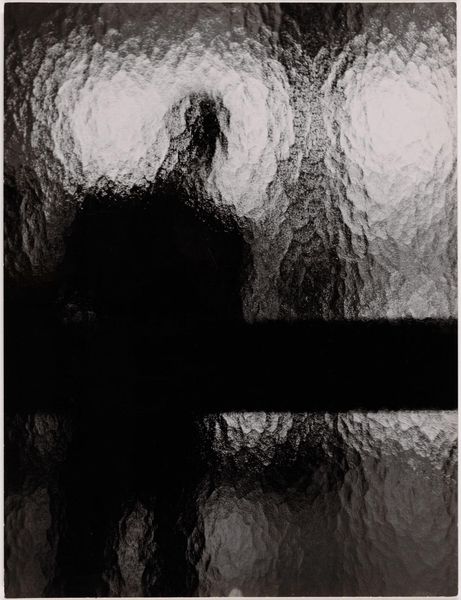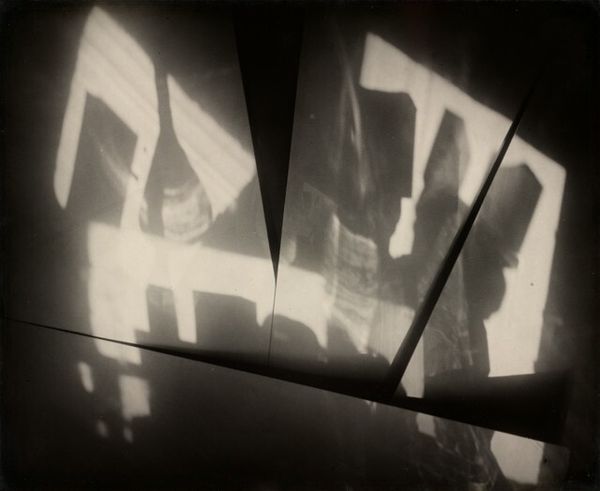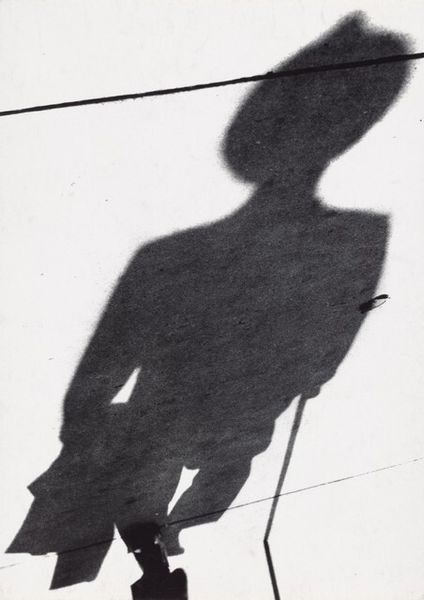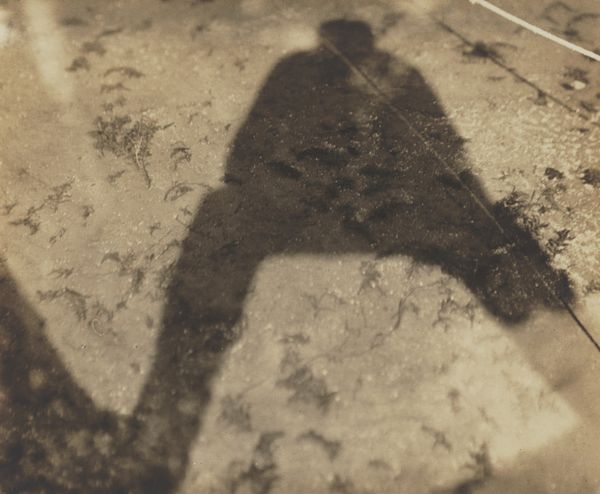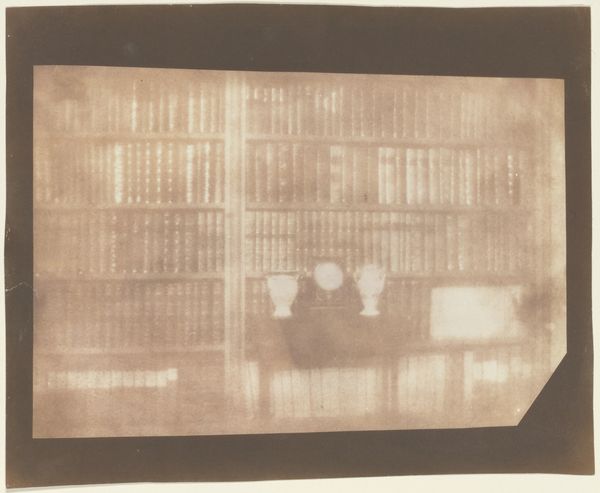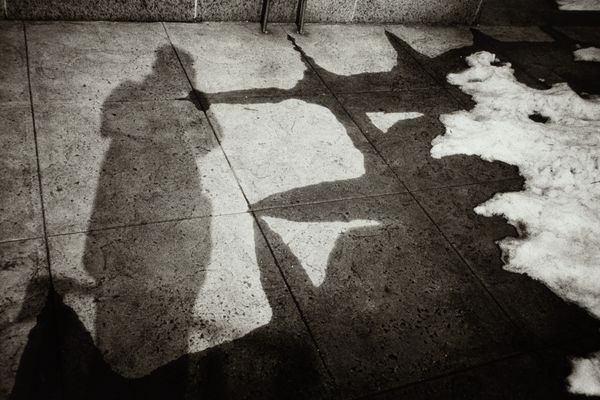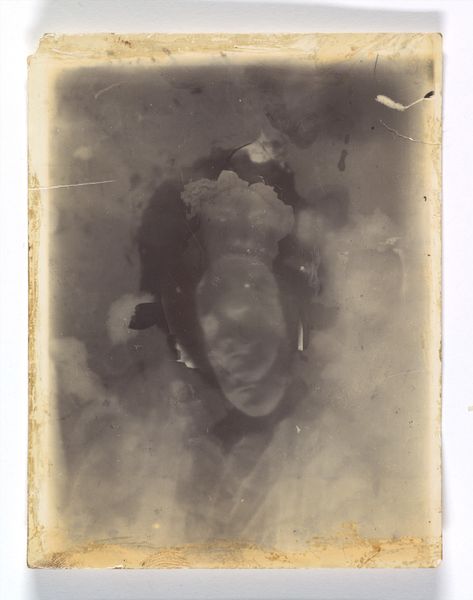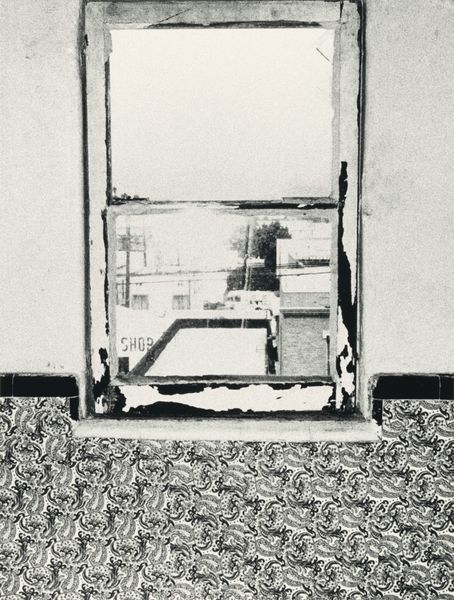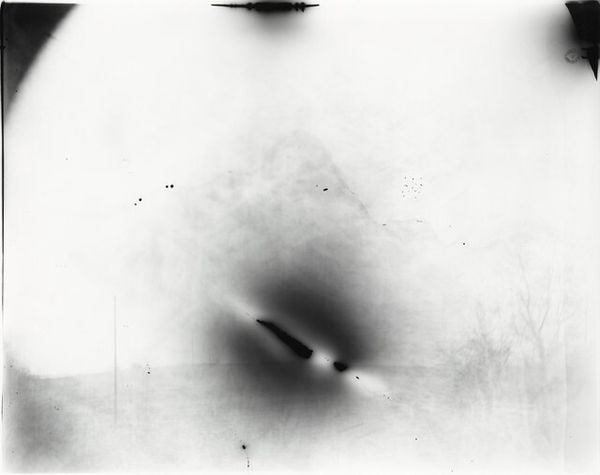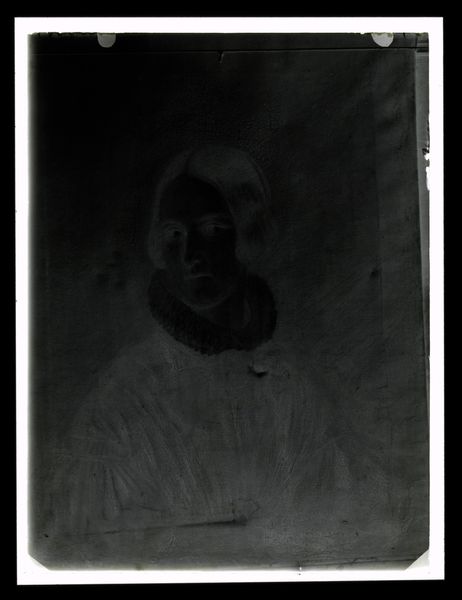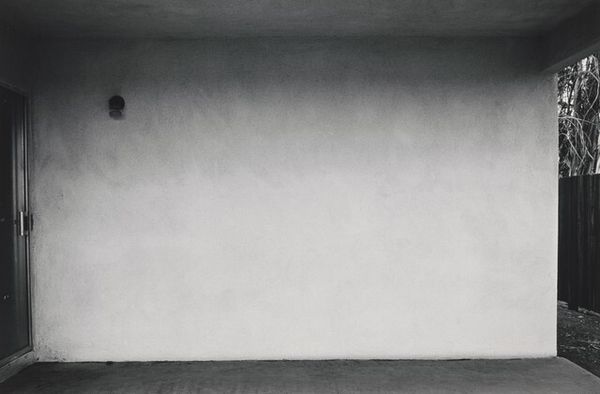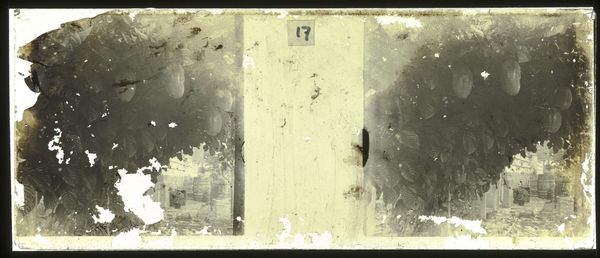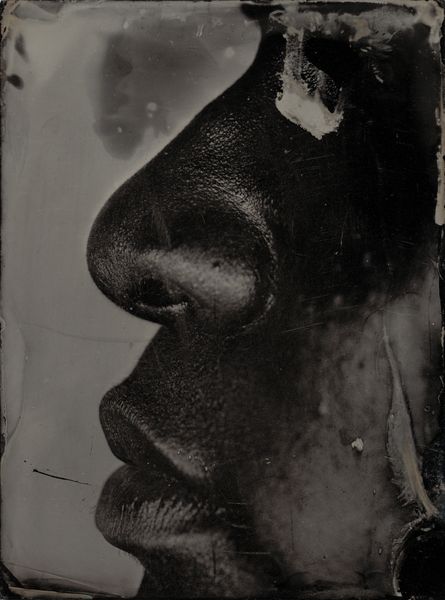
print, photography, gelatin-silver-print
#
portrait
#
contemporary
#
conceptual-art
# print
#
street-photography
#
photography
#
black and white
#
gelatin-silver-print
#
monochrome photography
#
monochrome
#
modernism
#
monochrome
Dimensions: overall: 28.6 x 36.4 cm (11 1/4 x 14 5/16 in.)
Copyright: National Gallery of Art: CC0 1.0
Curator: This is Robert Frank's "New York City, 7 Bleecker Street" from 1993. It's a gelatin silver print, showcasing his experimental approach to photography. Editor: Immediately, there's this looming, almost menacing shadow self-portrait. And then the bright rectangles, like a minimalist sculpture embedded in the photograph itself. It's unsettling but compelling. Curator: Frank often blurred the lines between photography and collage. Notice the film strip and what looks like a photograph of an open book, both incorporated into the image. We see Frank interrogating the very means of image production. Editor: The book feels significant, doesn’t it? As though Frank is showing how memories are composed, a sequence of images loosely tethered, prone to shadow and obscurity, fading to that strip on the right. Curator: I think you are on to something! Consider his earlier, influential work "The Americans," and the role of his Swiss origins that offered a perspective as a perpetual outsider viewing the US culture with that unique set of values that are deeply rooted. "New York City, 7 Bleecker Street", however, is far more introverted; the street scene has receded, giving way to self-reflection and the work in his dark room, layering one image upon the next as part of that process. Editor: Absolutely, the location here isn’t merely a backdrop, it's an emotional state. The blur feels very raw, very present, almost diaristic in that aspect. Frank, usually observing the outside world, turns inward. It is an existential statement! Curator: And note the rough handling of the materials—the visible tape, the uneven development. Frank is highlighting the materiality of the photograph itself, drawing our attention to its constructed nature. It removes some of that illusion of perfect rendering we so often get lost within. Editor: Exactly! By laying bare the process, he invites us to question the stability of memory itself. The print isn’t a window, but an object with its own history, bearing the marks of its making. It whispers about labor and manipulation of memory; of selection. I see a sort of mourning here. Curator: Yes, rather than being just another street photography it's clear he explores ways of visual language from documentary origins to that introspective focus that would be interesting for future image-makers to come. Editor: It gives the whole image this beautifully flawed, human quality. It's almost as if by showing the cracks, the process becomes just as revealing as the final photograph. Thank you for making me notice all of this.
Comments
No comments
Be the first to comment and join the conversation on the ultimate creative platform.
